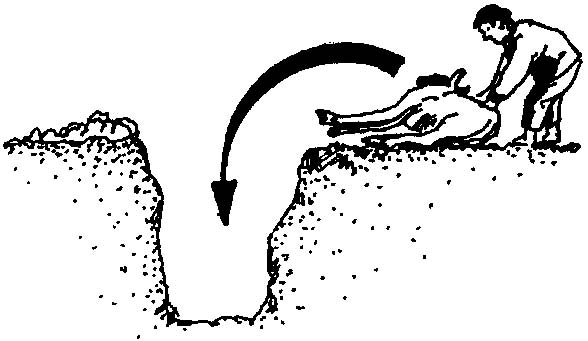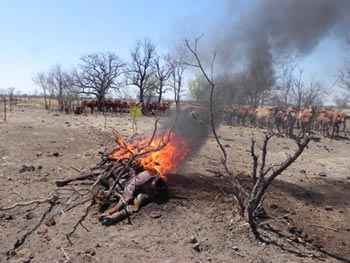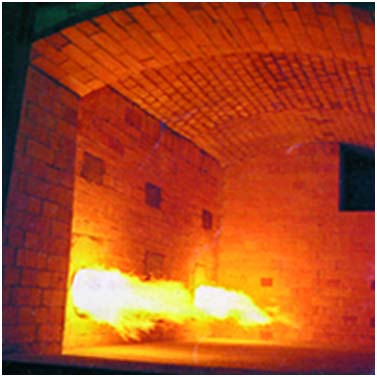 |
|
|
Translate this page in your preferred language:
|
| Disposal of dead animals |
| Back |
Disposal of Dead Animals
- The primary purpose of safe disposal of carcass is to ensure the check and spread of disease either to other susceptible animals or humans.
- Carcasses of animals may be disposed of by sending them to knackeries or by burial or burning.
Burial of carcasses
- Burial a suitable site should be selected. The burial place must be distant from a well or water course and there is a sufficiency of subsoil to allow a depth of 6 feet above the carcass.
- The carcass must be buried in its skin, be covered with a sufficient quantity of quicklime or other disinfectants.
- The dead animals should be arranged upon its back with feet upwards.
- The skin is slashed inside the pit all cases except ;in the case of anthrax.
- As the small of carcass may attract foxes and dogs the area of the burial needs to be disinfect with coal tar which will act as detergent for sufficient length of time.
Incineration/cremation/burning of carcasses
There are 4 methods of cremation
- Pit method
- Surface burning method
- Flame gun method
- Incineration in a destructor
Pit method

- Pit method for the carcass of a large cow dig a pit measuring about 7 feet long, 4 feet wide and 18 inch deep is dug.
- A trench about 9 inches wide and 9 inches deep is next dug right across the bottom of the pit, the ends of this cross trench being the bottom of the pit, and sloped upwards so as to reach ground level about 2.5 feet from the edge of the pit.
- The object of this trench is to provide for draught and to facilitate the lighting of the fire. The fire may be laid in the following sequence.
• Fill the trench with straw soaked with paraffin to provide lighting points.
• Place a few piece of heavy timber, iron rails at intervals across the ventilation trench so as to prevent its obstructions.
• Cover bottom of pit with thin pieces of wood.
• Add large pieces of wood.
• Saturate with paraffin.
• Add coal
- The fire is started by lighting the straw at one or both ends of the lighting points.
Surface burning method

- This method can usefully be adopted when labour is scarce or when the nature of ground is not suitable for construction of pit i.e., when the land is water logged.
- Two parallel trenches about 5 feet long, 9 inches wide and 9 inches deep and 2 feet apart are dug in the direction of the prevailing wind at the site selected for cremation.
- The carcass is placed over the trenches.
- Coal is placed on and around the carcass.
- Wood is soaked with paraffin.
- A small quantity of paraffin saturated straw is added, the fire is then lit.
Flame gun method

- No pit or trench is required in this method. The carcass is placed on ground or corrugated iron sheet and a powerful flame directed towards it, destroy the carcass.
- The time taken depends on the number of flame guns used and the size of the animals.
|
|
|
|
|
| Back |
|
|
Developed by :
|
Jaspal Singh
(Ex. M.V.Sc Scholar ) |
Dr. Pranav Kumar
(Assistant Professor)
|
Amandeep Singh
(Final Year B.V.Sc & AH student) |
|
|
|
|
|
|
Scroll
|
Division of Veterinary and Animal Husbandry Extension Education
Faculty of Veterinary Sciences and Animal Husbandry, R.S. Pura, SKUAST Jammu |
|



